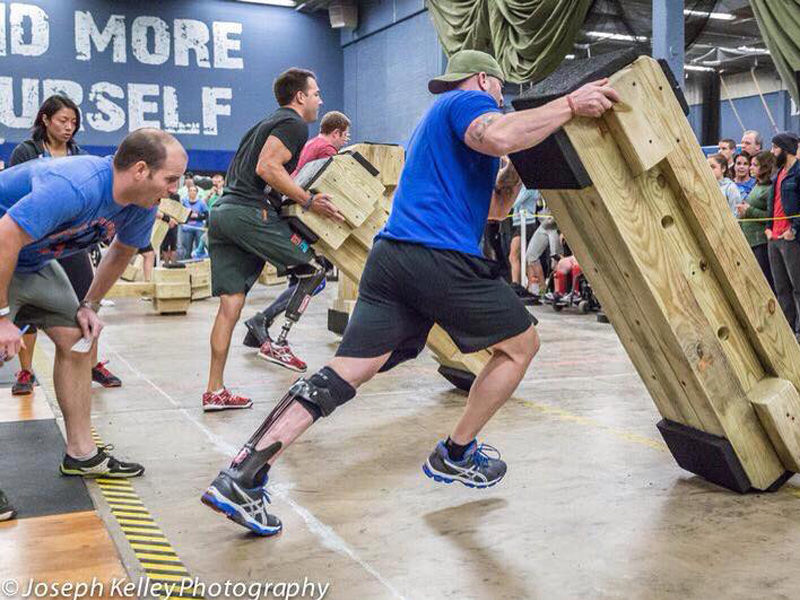Scott Weaver had been in the Navy a dozen years, the veteran of numerous deployments, and was about to disarm the 30th explosive device of his career when it exploded in front of him.
When he came to on that road in Afghanistan in April 2012, his leg was splayed out in front of him. He wasn’t sure he’d keep it, let alone be able to stay in the job he loved.
After doctors managed to save his leg, Weaver’s focus then turned to using it again. And thanks to an innovative prosthetic device he wears called the IDEO, today he not only can walk, he can run, jump out of helicopters and do just about everything he did before.
“Five, six years ago, you were done,” says the 38-year-old Weaver, whose left leg suffered massive tissue and nerve damage. Rehab was tough, but he managed to return to active duty as an explosive ordinance disposal technician. He’s also won the Working Wounded Warrior Games several times.
“The advancements in prosthetics let this happen,” says Weaver, who is stationed in Virginia Beach, Virginia, and was awarded the Bronze Star and Purple Heart for his time in Afghanistan. “It’s amazing.”
The IDEO, the innovative titanium and carbon leg brace that made it possible for Weaver to stay in the Navy, is just one example of how the field of prosthetics has grown in recent years. The wars in Iraq and Afghanistan helped spur advances in the devices as military members returned from the field with injured and missing limbs.
At the same time, advances in robotic technology and 3-D scanning have created prosthetic limbs that are a far cry from the wooden artificial limbs of old. In the past few years, scientists have been working to perfect prosthetic legs that have a direct connection to a person’s brain through implanted sensors, and therefore act more naturally.
Elsewhere, prosthetic devices are being created using 3-D technology. One prototype being worked on uses 3-D scanning of the residual limb and the remaining limb, and then analyzes tissue properties to come up with a prosthetic replica. Another designer created a “Water Leg,” a prosthetic lower leg that is 3-D printed then coated in a material that lets the wearer use it in the water, such as wading in the ocean or simply showering.
In fact, there are even 3-D printing enthusiasts who volunteer their technology and time to make prosthetics for people in need, especially kids, through an online community called e-NABLE. Volunteers from e-NABLE work with professional designers and engineers.
In January, a 7-year-old Georgia boy received a 3-D printed prosthetic arm created to resemble a Star Wars Clone Trooper. Even dogs have received 3-D printed artificial legs.
About 2 million people live with limb loss in the United States, according to the Amputee Coalition. More than half of amputations are due to vascular disease; about 45 percent are from trauma. Every year, about 185,000 amputations are performed.
Rick Stapleton, the president and senior practitioner of Tidewater Prosthetic Center, has seen a lot of changes in the 35 years he’s been in the prosthetic business. When he started, “we were still making wooden legs,” he says.
He takes care of a couple of gentlemen who still use the old prosthetic legs made of wood and resin, keeping them clean and in good working order. But he’s also seen the newer devices turn lives around.
Stapleton says what he can bring to his patients is simple.
“Hope,” he says. “We’re able to restore their lives.”
That’s what happened to 54-year-old Colleen Pearson of Portsmouth. Diabetes (which can lead to vascular issues in the limbs) had caused severe problems in her right ankle. Doctors told Pearson she could have reconstructive surgery, which could take her out of commission for up to two years, or have her leg amputated just below the knee.
She chose amputation.
Stapleton had her fitted for titanium prosthetic pretty quickly following surgery. Four months later, a determined Pearson was back at her job as a corrections officer at the Hampton Roads Regional Jail. Physical therapy taught her to walk without a limp.
If you didn’t know better, or see her off-duty in the summer, you wouldn’t know she had a limb missing, Pearson says. Her prosthetic is that good, and has helped her life that well.
“I don’t hide my prosthetic,” Pearson says. “In the summer, I wear capris. It’s part of me, and part of my life.”



